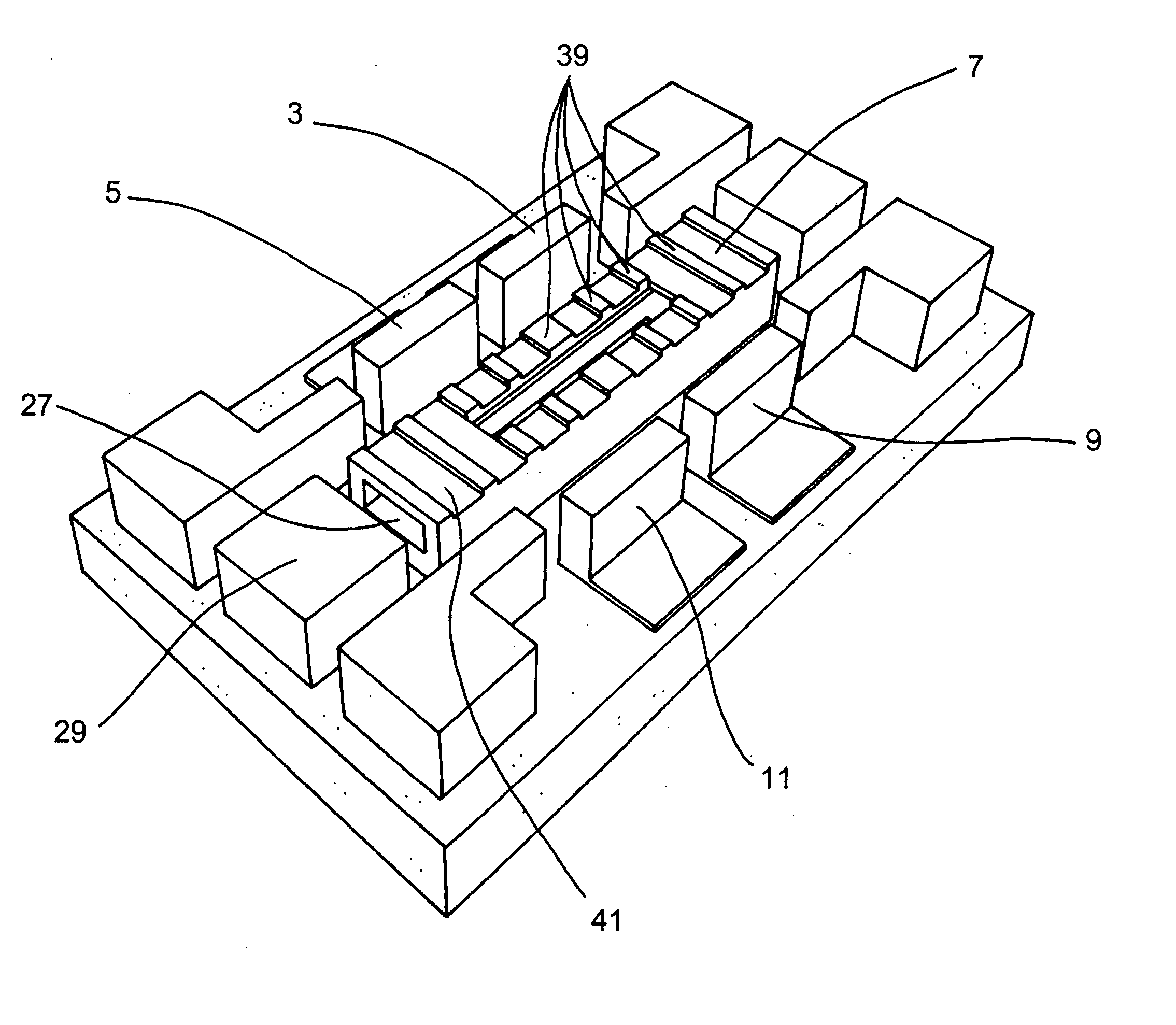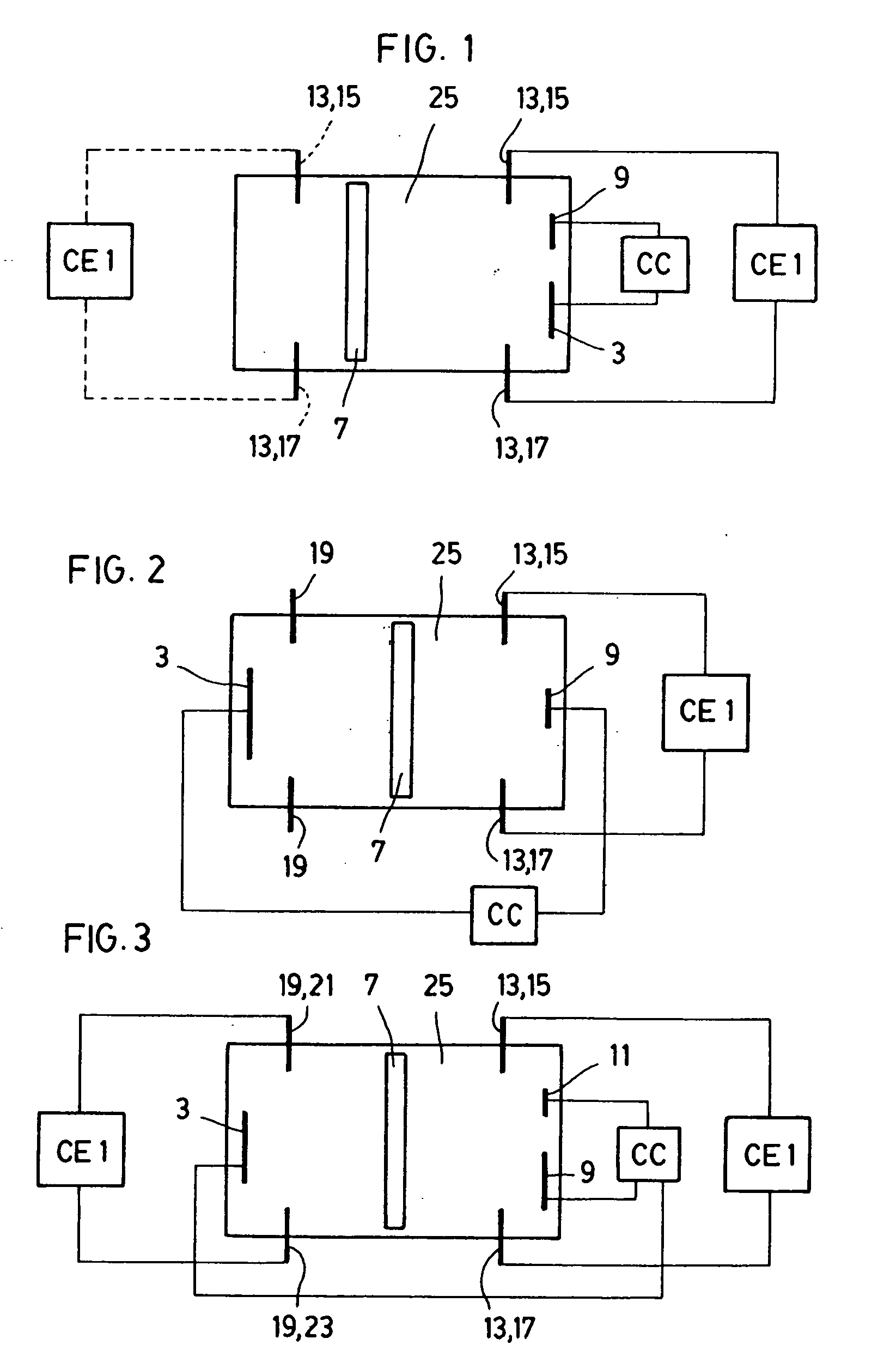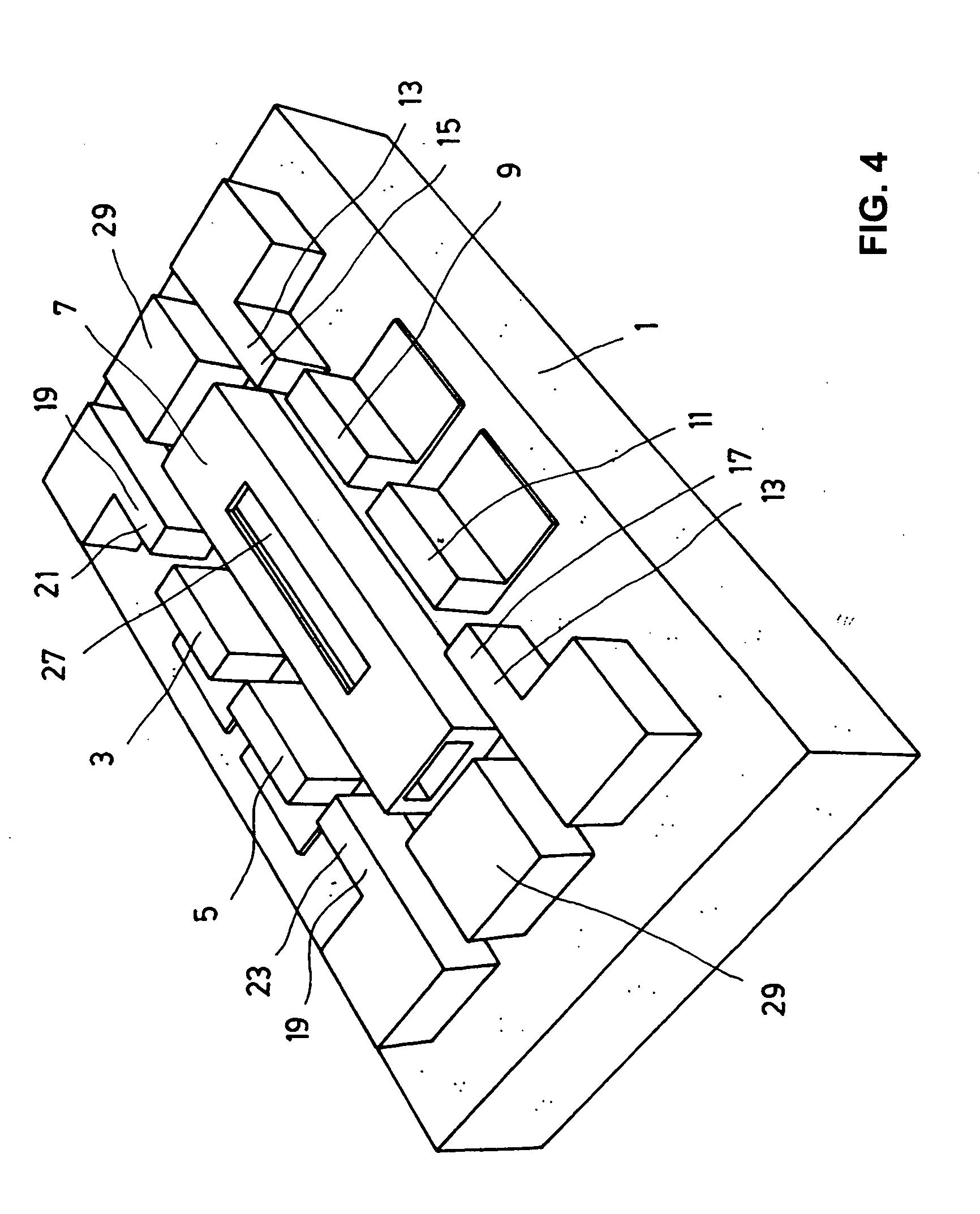Miniaturised relay and corresponding uses thereof
a relay and miniaturisation technology, applied in the direction of micromechanical switches, gyroscopes/turn-sensitive devices, acceleration measurement using interia forces, etc., can solve the problems of reducing the useful life and reliability of the relay, and reducing the frictional force. , to achieve the effect of reducing frictional force, avoiding sticking and high frictional forces
- Summary
- Abstract
- Description
- Claims
- Application Information
AI Technical Summary
Benefits of technology
Problems solved by technology
Method used
Image
Examples
Embodiment Construction
[0082]FIG. 1 shows a first basic functioning mode of a relay according to the invention. The relay defines an intermediate space 25 in which is housed a conductive element 7, which can move freely along the intermediate space 25, since physically it is a detached part which is not physically joined to the walls which define the intermediate space 25. The relay also defines a first zone, on the left in FIG. 1, and a second zone, on the right in FIG. 1. In the second zone are arranged a first condenser plate 3 and a second condenser plate 9. In the example shown in FIG. 1 both condenser plates 3 and 9 have different surface areas, although they can be equal with respect to one another. The first condenser plate 3 and the second condenser plate 9 are connected to a CC control circuit. Applying a voltage between the first condenser plate 3 and the second condenser plate 9, the conductive element is always attracted towards the right in FIG. 1, towards the condenser plates 3 and 9. The c...
PUM
 Login to View More
Login to View More Abstract
Description
Claims
Application Information
 Login to View More
Login to View More - R&D
- Intellectual Property
- Life Sciences
- Materials
- Tech Scout
- Unparalleled Data Quality
- Higher Quality Content
- 60% Fewer Hallucinations
Browse by: Latest US Patents, China's latest patents, Technical Efficacy Thesaurus, Application Domain, Technology Topic, Popular Technical Reports.
© 2025 PatSnap. All rights reserved.Legal|Privacy policy|Modern Slavery Act Transparency Statement|Sitemap|About US| Contact US: help@patsnap.com



